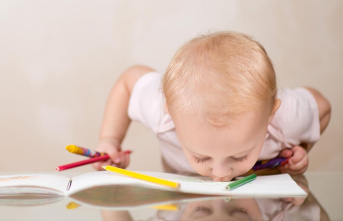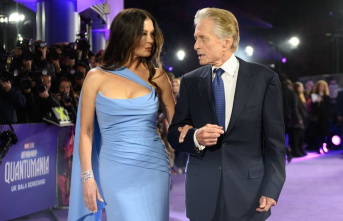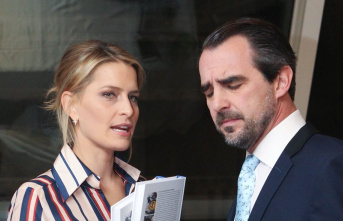There was no good star over the "Winter Dance Party". For 24 days in January and February 1959, five singers and bands wanted to drive through the American Midwest to give concerts. Without a break, every day a rock'n'roll show. But there were problems: the bus that Buddy Holly, J.P. Richardson - known as The Big Bopper -, Frankie Sardo, Ritchie Valens and Dion Dimucci with his band Dion and the Belmonts was supposed to drive from gig to gig, was not up to the wintry conditions.
After eleven performances, about halfway through the tour, Buddy Holly was fed up. The 22-year-old rock 'n' roll star was planning to fly to Moorhead, Minnesota. He and his band members chartered a Beechcraft Bonanza, a single-engine light aircraft, from Mason City Airport. The destination was Fargo, the closest airport to the next tour location. It was to be his last flight: the plane crashed, Ritchie Valens and The Big Bopper died with Holly. February 3, 1959 has since been known as The Day The Music Died - the day music died.
Ultimately, it was more or less a matter of chance who sat in the accident machine. The question of who should fly and who should take the unloved bus led to all sorts of discussions among the musicians. Holly - popular with teenagers for songs like "Peggy Sue" - definitely wanted to take the airway to give herself some rest before her next performance. He also promised to do the laundry for everyone. The Big Bopper had caught the flu and was also trying to get on the plane. Waylon Jennings, bassist in Buddy Holly's band, eventually agreed to give him his seat. "I hope your old bus finally freezes over," Holly said jokingly to him, Jennings later said. To which he replied: "And I hope your plane crashes." "For years I believed the crash was my fault," Jennings said.
The third seat on the plane also changed hands at short notice. Tommy Allsup, Buddy Holly's guitarist, was originally intended for this. But Ritchie Valens had never flown in a small plane before, so he asked Allsup to fly with him. Both tossed a coin - and Valens won. Legend has it that he exclaimed: "This is the first time in my life that I've won something." Dion Dimucci, on the other hand, decided against the plane. He would have liked it, but at 36 US dollars the flight seemed too expensive to him.
In hindsight, Jennings, Allsup and Dimucci are lucky not to have boarded the plane. Their decisions or just chance saved their lives. Holly, Valens and The Big Bopper took off at 12:55 am after the concert in Clear Lake, Iowa, to adoring fans saying goodbye. Her pilot was 21-year-old Roger Peterson, a young man whose purpose in life was to fly. However, the plane stayed in the air for only a few minutes.
What exactly happened is still unclear to this day. Five minutes after takeoff, Peterson tried in vain to establish radio contact with the tower. The next morning, the wreck was found in a cornfield eight kilometers from Clear Lake. The machine hit the ground at around 270 km/h, and none of the four occupants survived the crash. The plane probably got caught in a snowstorm and the inexperienced pilot lost his bearings. A later investigation determined that he was not qualified for an instrument flight in poor visibility conditions.
The crash killed three aspiring musicians and shocked the US music scene. But the tragic accident had other bad consequences: Billy Holly's pregnant wife Maria Elena Santiago heard the news of her husband's death on the television news and then suffered a miscarriage. The couple had married just six months earlier. Only this case led to a regulation in the USA, according to which the relatives must first be notified before the identity of the fatality can be published.
Buddy Holly achieved his greatest success posthumously: his death ensured mass sales of his records – for months. The musician's premature death drew the music industry's attention for the first time to the commercial potential of such tragic cases. Holly had been a relatively popular musician in his lifetime, but it was only after his death that he became a myth, even overseas. His songs also enjoyed increasing popularity in Great Britain and thus influenced music history: The Beatles members John Lennon and George Harrison learned to play guitar with Holly and the first song that the Rolling Stones released in the USA was a Buddy Holly cover.
In retrospect, it seems almost macabre that the "Winter Dance Party" just went on - long before the sentence "The Show Must Go On" became a winged rock word. The evening after the crash, the remaining musicians performed as planned in Moorhead, and for the next two weeks Waylon Jennings took over Buddy Holly's part as singer.
And so the music lived on even after the day it supposedly died. Don McLean gave this title to the day of the accident with his song "American Pie" in 1971 and thus memorialized the deceased, but also the rock'n'roll music of the sixties. The song was later covered by Madonna as well. The crash of Buddy Holly, The Big Bopper and Ritchie Valens has long been a piece of pop history - also in Germany. In 1985, for example, the doctors sang about Buddy Holly's bloodied glasses, which were only found two months after the crash and then disappeared for 20 years. A physical memorial also stands at the crash site today: a guitar and three vinyl records.
Quellen: "Time" / "Rolling Stone" / Winter Dance Party











